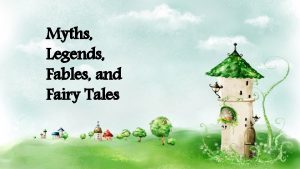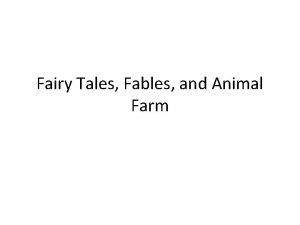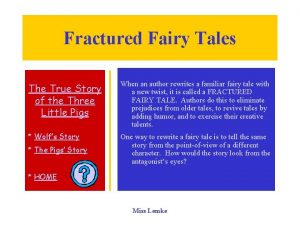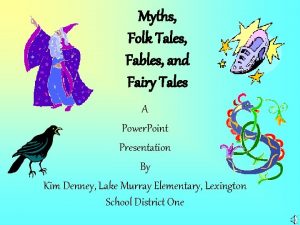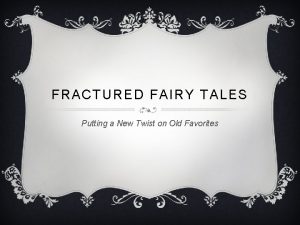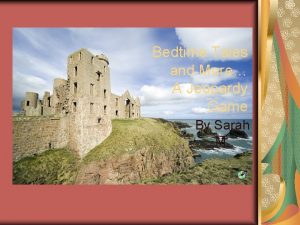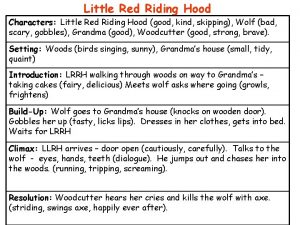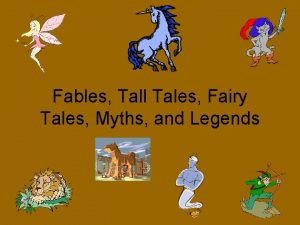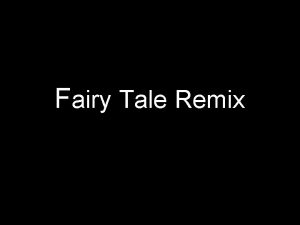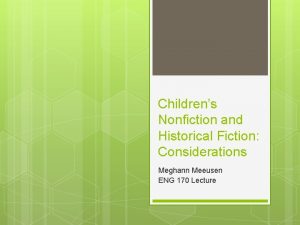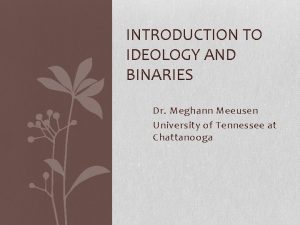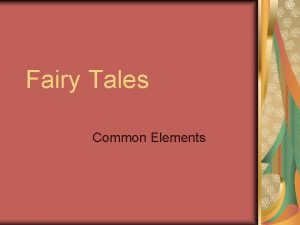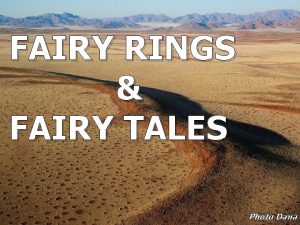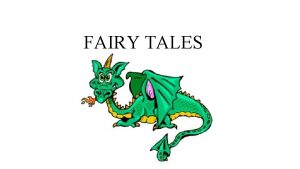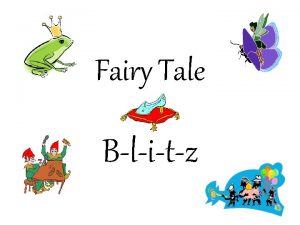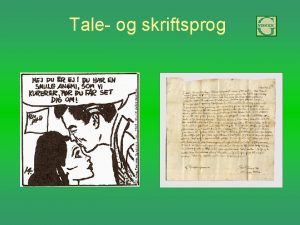Fairy Tale Terminology ENG 170 Lecture Meghann Meeusen









- Slides: 9

Fairy Tale Terminology ENG 170 Lecture Meghann Meeusen

Definitions • Legends: based on events believed to be real • Myths: stories that take place outside of human time, often featuring supernatural heroes and gods/goddesses • Retellings or Revisions: Fairy tales are frequently retold and adapted to new contexts, whether to be more accessible to certain audiences, promote national pride, or fit with our understanding of a culture. • Intertextuality- relationship between a prior text and a new text created when an author borrows from the prior one or references it within the new text

Postmodernism and Parody

Literary Fairy Tale and Oral Tale • A literary fairy tale is written down and has a definite author, and in the 16 th, 17 th, and 18 th century, “experimented with and expanded upon the stock motifs, figures and plots of the fairy tale. • An oral folk tale is collectively authored and shared, “cultivated by non-literate and literate people to express the manner in which they perceived and perceive nature and their social order and their wish to satisfy their needs and wants” (Zipes 7).

Capture the Voice of a Culture • Charles Perrault (1697)- France • Aristocratic and courtly audience, sly asides and fashion details • Always included a moral, both cautionary and flitatious/tongue-incheek • Jakob and Wilhelm Grimm (1812 -1815)- Germany • Shift to make tales for children, which removed sexually explicit material • Emphasized the traditional roles of women, enhanced violence • Hans Christian Andersen (mid 19 th century)- Denmark • Original material • Ugly Duckling, Emperor’s New Clothes, Little Mermaid and The Snow Queen (Disney’s Frozen) • Andrew Lang (1880, 1892)- England • “Color Books” • Jack and the Beanstalk

Classic Versus Canon • Canon: those texts that by social and cultural consensus have been acknowledged as the most important or central works of a period, country or genre • Classic: text that has endured overall several generations and which is esteemed on both aesthetic and cultural grounds

Ideology • An ideology is a set of beliefs, values, or ways of seeing the world. It is a system of ideas or ideals, attitudes, and perceptions typical of a given class or group of people in a specific time and place. • Texts often reflect particular ideologies in the way they present certain elements as the norm, thus reinforcing a particular worldview that is frequently shared by many people in a society and/or reinforced by those in power.

Implicit/Explicit • implicit ideology- when an author is passing on cultural beliefs without even being aware of doing so • explicit ideology- the “theme” or message of the text • Ask: • • What does this story present as “normal”? What values or beliefs about society or people does it present? Does this story reinforce a dominant belief of a particular group? Does it complicate or question norms, beliefs or value systems of our society? • Does the text reflect a pattern or offer a particular worldview or perspective that we see repeated in many texts?

References This presentation is based in part on information in Chapter Four “Fairy Tales” of Reading Children's Literature: A Critical Introduction by Carrie Hintz and Eric Tribunella
 Funksiyaning eng katta va eng kichik qiymati
Funksiyaning eng katta va eng kichik qiymati Once upon a time by nadine gordimer
Once upon a time by nadine gordimer Myth legend fable
Myth legend fable Animal symbolism in fairy tales
Animal symbolism in fairy tales The true story of the three little pigs point of view
The true story of the three little pigs point of view Examples of folk tales
Examples of folk tales Fractured fairy tales definition
Fractured fairy tales definition Fairy tale jeopardy
Fairy tale jeopardy Characters in the little red riding hood
Characters in the little red riding hood Fable definition
Fable definition


